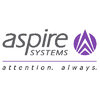
i
Molecular
Connections
Filter interviews by
Molecular Connections UI Developer Interview Questions and Answers
9 Interview questions
Lazy loading is a technique used to defer the loading of non-critical resources until they are needed.
Lazy loading can improve the performance of a React application by reducing the initial load time.
React.lazy() is a built-in function that allows for lazy loading of components.
Code splitting can be used to split the application into smaller chunks that can be loaded on demand.
Lazy loading can be used for images, ...
Angular is a full-fledged framework while React is a library for building UI components.
Angular is a complete solution for building web applications while React is focused on building UI components.
Angular uses two-way data binding while React uses one-way data flow.
Angular has a steeper learning curve while React is easier to learn.
Angular has a larger file size while React has a smaller file size.
Angular has a b...
Block components take up the full width of their container, while inline components only take up the necessary space.
Block components create a new line and take up the full width of their container
Inline components only take up the necessary space and do not create a new line
Block components are used for larger elements like paragraphs and headings
Inline components are used for smaller elements like links and butt...
React has two types of hook methods: State Hooks and Effect Hooks.
State Hooks manage state in functional components.
Effect Hooks manage side effects in functional components.
useState() is an example of State Hook.
useEffect() is an example of Effect Hook.
Functional components are stateless and use functional programming concepts, while class-based components are stateful and use object-oriented programming concepts.
Functional components are simpler and easier to read and test.
Class-based components have access to lifecycle methods and state.
Functional components are preferred for simple UI components, while class-based components are preferred for complex UI compo...
React is a JavaScript library for building user interfaces.
React allows for building reusable UI components.
It uses a virtual DOM for efficient rendering.
React can be used for both web and mobile app development.
It supports server-side rendering for improved SEO.
React is maintained by Facebook and has a large community of developers.
Higher order function takes a function as an argument or returns a function. Higher order component is a function that takes a component and returns a new component.
Higher order function is a function that operates on other functions, either by taking them as arguments or by returning them.
Higher order component is a function that takes a component and returns a new component with additional functionality.
Higher o...
Redux is a predictable state container for JavaScript apps.
Redux is a state management library for JavaScript applications.
It helps in managing the state of an application in a predictable way.
Redux follows a unidirectional data flow architecture.
It uses actions, reducers, and a store to manage the state of an application.
Redux is commonly used with React to build scalable and maintainable applications.
Semantic structure of HTML refers to using HTML elements to properly structure and organize content for better accessibility and SEO.
Semantic HTML elements provide meaning to the content, making it easier for search engines to understand and index the page.
Examples of semantic elements include <header>, <nav>, <article>, <section>, <aside>, <footer>, <main>, <figure>...
Molecular Connections UI Developer Interview Experiences
1 interview found
I applied via LinkedIn and was interviewed in Mar 2022. There were 5 interview rounds.

Mini project using react and redux
Question based on react concepts, basics and advanced topics of JavaScript, HTML and CSS
(9 Questions)
- Q1. What is React and feature of react.
- Ans.
React is a JavaScript library for building user interfaces.
React allows for building reusable UI components.
It uses a virtual DOM for efficient rendering.
React can be used for both web and mobile app development.
It supports server-side rendering for improved SEO.
React is maintained by Facebook and has a large community of developers.
- Q2. Difference between functional and class based component?
- Ans.
Functional components are stateless and use functional programming concepts, while class-based components are stateful and use object-oriented programming concepts.
Functional components are simpler and easier to read and test.
Class-based components have access to lifecycle methods and state.
Functional components are preferred for simple UI components, while class-based components are preferred for complex UI components...
- Q3. Types of hook methods available in React?
- Ans.
React has two types of hook methods: State Hooks and Effect Hooks.
State Hooks manage state in functional components.
Effect Hooks manage side effects in functional components.
useState() is an example of State Hook.
useEffect() is an example of Effect Hook.
- Q4. What is Redux? Explain workflow of redux and uses of redux.
- Ans.
Redux is a predictable state container for JavaScript apps.
Redux is a state management library for JavaScript applications.
It helps in managing the state of an application in a predictable way.
Redux follows a unidirectional data flow architecture.
It uses actions, reducers, and a store to manage the state of an application.
Redux is commonly used with React to build scalable and maintainable applications.
- Q5. Explain Higher order function and Higher order component?
- Ans.
Higher order function takes a function as an argument or returns a function. Higher order component is a function that takes a component and returns a new component.
Higher order function is a function that operates on other functions, either by taking them as arguments or by returning them.
Higher order component is a function that takes a component and returns a new component with additional functionality.
Higher order ...
- Q6. Semantic structure of HTML.
- Ans.
Semantic structure of HTML refers to using HTML elements to properly structure and organize content for better accessibility and SEO.
Semantic HTML elements provide meaning to the content, making it easier for search engines to understand and index the page.
Examples of semantic elements include <header>, <nav>, <article>, <section>, <aside>, <footer>, <main>, <figure>, <...
- Q7. Difference between block component and inline component?
- Ans.
Block components take up the full width of their container, while inline components only take up the necessary space.
Block components create a new line and take up the full width of their container
Inline components only take up the necessary space and do not create a new line
Block components are used for larger elements like paragraphs and headings
Inline components are used for smaller elements like links and buttons
- Q8. Lazy loading in React.
- Ans.
Lazy loading is a technique used to defer the loading of non-critical resources until they are needed.
Lazy loading can improve the performance of a React application by reducing the initial load time.
React.lazy() is a built-in function that allows for lazy loading of components.
Code splitting can be used to split the application into smaller chunks that can be loaded on demand.
Lazy loading can be used for images, video...
- Q9. Difference between Angular and React
- Ans.
Angular is a full-fledged framework while React is a library for building UI components.
Angular is a complete solution for building web applications while React is focused on building UI components.
Angular uses two-way data binding while React uses one-way data flow.
Angular has a steeper learning curve while React is easier to learn.
Angular has a larger file size while React has a smaller file size.
Angular has a built-...
(5 Questions)
- Q1. What are your salary expectations?
- Q2. Share details of your previous job.
- Q3. Why are you looking for a change?
- Ans.
I'm seeking new challenges to grow my skills and contribute to innovative projects in a dynamic environment.
Desire for professional growth: I'm eager to learn new technologies and methodologies that can enhance my skill set.
Seeking a collaborative environment: I thrive in teams that encourage creativity and open communication, which I hope to find in a new role.
Interest in innovative projects: I'm excited about the opp...
- Q4. What are your strengths and weaknesses?
- Ans.
I excel in problem-solving and collaboration, but I sometimes struggle with time management under tight deadlines.
Strength: Strong problem-solving skills. Example: Successfully debugged a complex UI issue that improved user experience.
Strength: Excellent collaboration. Example: Worked closely with designers and developers to create a cohesive product.
Weakness: Time management. Example: Occasionally underestimate the ti...
- Q5. Tell me about yourself.
Interview Preparation Tips
- HTML
- CSS
- Javascript
- React
- Es6
Read about technology mentioned in job description.
Read about company information.
Watch and read interview questions related to your job profile and job description.
Focus on what you know and what you can explain in good way.
Sometimes it happens that You have given good interview but due to some reason you have not selected.
Make a note of pervious interview questions, Prepare them well and again be ready for another interview.
Believe in yourself, Be confident
Skills evaluated in this interview
Top trending discussions






Interview questions from similar companies

I appeared for an interview in Feb 2025, where I was asked the following questions.
- Q1. Css box model How to Optimize web pages? Alt tag Asked me to code to create the circle and place text on it. Basics of html, css javascript
- Q2. In which scenario Div and span will be used? Difference between == and === in javascript
- Ans.
Div is a block-level element for layout, while span is an inline element for styling text.
Div is used for grouping larger sections of content, e.g., <div class='container'>...</div>
Span is used for styling small portions of text, e.g., <span class='highlight'>text</span>
Div elements take up the full width available, while span elements only take up as much width as their content.
Div can contain ...

One question of recursion. Then pillars of angular. Type script interfaces
(1 Question)
- Q1. What is angular ?
- Ans.
Angular is a popular front-end framework for building dynamic web applications.
Angular is developed and maintained by Google.
It uses TypeScript for building applications.
Angular provides features like two-way data binding, dependency injection, and routing.
Components, services, modules, and directives are key building blocks in Angular.
Example: Angular allows for the creation of single-page applications (SPAs) with smo...
Interview Preparation Tips

I applied via LinkedIn and was interviewed before May 2021. There was 1 interview round.
(2 Questions)
- Q1. Questions on HTML & advance SCSS (functions)
- Q2. Questions on Bootstrap, Javascript, Vue Js
Interview Preparation Tips

Software Developer Interview Questions & Answers
Bounteous x Accoliteposted on 11 Mar 2022
I appeared for an interview before Mar 2021.
(3 Questions)
Round duration - 60 minutes
Round difficulty - Medium
21 students were shortlisted from the 1st MCQ round and in this round we were asked to write the codes (function only) of 3 questions in 1 hour time.
- Q1.
Rotting Oranges Problem Statement
You are given a grid containing oranges where each cell of the grid can contain one of the three integer values:
- 0 - representing an empty cell
- 1 - representing a fre...
- Ans.
Find the minimum time required to rot all fresh oranges in a grid.
Use Breadth First Search (BFS) to simulate the rotting process
Track the time taken to rot all oranges and return -1 if any fresh oranges remain
Handle edge cases like no fresh oranges or all oranges already rotten
Consider using a queue to efficiently process adjacent oranges
- Q2.
Majority Element Problem Statement
Given an array/list 'ARR' consisting of 'N' integers, your task is to find the majority element in the array. If there is no majority element present, return -1.
Exampl...
- Ans.
Find the majority element in an array, return -1 if no majority element exists.
Iterate through the array and keep track of the count of each element using a hashmap.
Check if any element's count is greater than floor(N/2) to determine the majority element.
Return the majority element or -1 if no majority element exists.
- Q3.
Maximum Path Sum Between Two Leaves Problem Description
You are provided with a non-empty binary tree in which each node contains a non-negative integer value. Your task is to find and return the maximum ...
- Ans.
Find the maximum path sum between two leaf nodes in a binary tree.
Traverse the tree to find the maximum path sum between two leaf nodes.
Keep track of the maximum sum found so far.
Consider all possible paths between leaf nodes.
Handle cases where the tree has only a single leaf node.
Implement a recursive function to calculate the maximum path sum.
(3 Questions)
Round duration - 60 minutes
Round difficulty - Medium
This was a technical round with DSA based questions.
- Q1.
N-th Node From The End Problem Statement
You are given a Singly Linked List of integers. The task is to find the N-th node from the end of the list.
Example:
Input:
If the given list is (1 -> -2 -&g...
- Ans.
Find the N-th node from the end of a Singly Linked List of integers.
Traverse the list to find the length L of the list.
Calculate the position of the N-th node from the beginning as L - N + 1.
Traverse the list again to reach the calculated position and return the node's value.
- Q2.
LCA of Binary Tree Problem Statement
You are given a binary tree consisting of distinct integers and two nodes,
XandY. Your task is to find and return the Lowest Common Ancestor (LCA) of these two nodes... - Ans.
Find the Lowest Common Ancestor (LCA) of two nodes in a binary tree.
Traverse the binary tree to find the paths from the root to nodes X and Y.
Compare the paths to find the last common node, which is the LCA.
Handle cases where one node is an ancestor of the other or when one node is the LCA itself.
- Q3.
Reverse Words in a String: Problem Statement
You are given a string of length
N. Your task is to reverse the string word by word. The input may contain multiple spaces between words and may have leading o... - Ans.
Reverse words in a string while handling leading/trailing spaces and multiple spaces between words.
Split the input string by spaces to get individual words
Reverse the list of words
Join the reversed words with a single space in between
Handle leading/trailing spaces by stripping them before and after reversing
(3 Questions)
Round duration - 60 minutes
Round difficulty - Easy
Technical Interview round with questions based on DSA
- Q1.
Minimum Time To Solve The Problems
Given 'N' subjects, each containing a certain number of problems, and 'K' friends, assign subjects to friends such that each subject goes to exactly one friend, maintain...
- Ans.
Assign subjects to friends to minimize maximum workload, find minimum time for most loaded friend.
Sort subjects in descending order
Assign subjects to friends one by one until all subjects are assigned
The maximum workload will be the sum of problems assigned to the friend with the most problems
Return the maximum workload as the minimum time required
- Q2. What is grammar in the context of compiler design?
- Ans.
Grammar in compiler design defines the syntax and structure of a programming language.
Grammar specifies the rules for forming valid statements in a programming language.
It consists of a set of production rules that define how valid programs can be constructed.
There are different types of grammars such as context-free grammar, regular grammar, etc.
Example: In C programming language, the grammar specifies that a for loop...
- Q3. What is a token in compiler design?
- Ans.
A token in compiler design is a basic unit of syntax that the compiler can understand and process.
Tokens are the smallest units of a program that are meaningful to the compiler.
Examples of tokens include keywords, identifiers, operators, and punctuation symbols.
Tokens are generated by the lexical analysis phase of the compiler.
Tokens are used by the parser to build the abstract syntax tree of the program.
(3 Questions)
Round duration - 60 minutes
Round difficulty - Easy
Technical round with questions on DSA and Compiler Design mainly. He told me that you’ll be having your final HR round in some time. I knew that I was going well because he seemed to be quite satisfied with my answers.
- Q1.
Sum Root to Leaf Numbers
You are given an arbitrary binary tree consisting of N nodes, each associated with an integer value from 1 to 9. Each root-to-leaf path can be considered a number formed by concat...
- Ans.
Find the total sum of all root to leaf paths in a binary tree formed by concatenating node values.
Traverse the binary tree from root to leaf nodes, keeping track of the current path sum
Add the current path sum to the total sum when reaching a leaf node
Use modulo (10^9 + 7) to handle large outputs
- Q2. What is a regular language?
- Ans.
A regular language is a language that can be recognized by a finite automaton.
Regular languages can be described by regular expressions.
Regular languages are closed under union, concatenation, and Kleene star operations.
Examples of regular languages include the set of all strings over an alphabet that contain an even number of 'a's.
- Q3. What are NP and NP-Hard problems?
- Ans.
NP problems are decision problems that can be verified in polynomial time, while NP-Hard problems are at least as hard as the hardest problems in NP.
NP problems can be verified in polynomial time but not necessarily solved in polynomial time.
NP-Hard problems are at least as hard as the hardest problems in NP, but may not be in NP themselves.
Examples of NP problems include the subset sum problem and the traveling salesm...
Round duration - 30 minutes
Round difficulty - Easy
That was the round for which I’ve been waiting for hours
She was very friendly and nice to talk to. It didn’t seem that I was talking to the HR. It was more like talking to a friend. Finally we discussed about the pay-scale and work culture in Accolite.
Interview Preparation Tips
Tip 1 : Must do Previously asked Interview as well as Online Test Questions.
Tip 2 : Go through all the previous interview experiences from Codestudio and Leetcode.
Tip 3 : Do at-least 2 good projects and you must know every bit of them.
Tip 1 : Have at-least 2 good projects explained in short with all important points covered.
Tip 2 : Every skill must be mentioned.
Tip 3 : Focus on skills, projects and experiences more.
Skills evaluated in this interview

I applied via Walk-in and was interviewed before Nov 2020. There were 3 interview rounds.
Interview Questionnaire
2 Questions
- Q1. A few terms related to mutual fund industry were asked.
- Q2. What do you understand by market capitalisation?
- Ans. Total number of shares outstanding multiplied by the price of one share.
Interview Preparation Tips

I applied via Referral and was interviewed in Jul 2020. There were 3 interview rounds.
Interview Questionnaire
3 Questions
- Q1. Why do you want to join Incedo, what is your plan in future, explain your past experience with an example
- Ans.
I am drawn to Incedo for its innovative approach and growth opportunities, aligning with my career aspirations in technology consulting.
Incedo's commitment to innovation resonates with my passion for technology and problem-solving.
I admire Incedo's collaborative culture, which I experienced in my previous role at XYZ Corp, where teamwork led to a successful project launch.
My future plan includes advancing my skills in ...
- Q2. Basic of capital market
- Q3. Market capitalisation, capital market, derivatives, accounting knowledge
Interview Preparation Tips

Software Developer Interview Questions & Answers
Bounteous x Accoliteposted on 24 Jan 2022
I applied via Campus Placement and was interviewed before Jan 2021. There were 3 interview rounds.
Interview Questionnaire
3 Questions
- Q1. 1. Write a code to split an array of integers into two subarray where both the array has equal sum.
- Ans.
Code to split an array of integers into two subarrays with equal sum.
Iterate through the array and calculate the total sum.
Divide the sum by 2 to get the target sum for each subarray.
Use dynamic programming to find a subset of the array that adds up to the target sum.
Return the two subarrays.
Example: [1, 2, 3, 4, 5, 6] -> [1, 2, 3, 6], [4, 5]
Example: [1, 2, 3, 4, 5] -> [1, 4, 5], [2, 3]
- Q2. To write code to build up a binary tree from scratch (implement a BST) and then to write all the methods like all the tree traversal algo, and all other stuffs.
- Ans.
Implementing a binary search tree and its traversal methods.
Start by defining a Node class with left and right child pointers.
Implement insert() method to add nodes to the tree.
Implement inorder(), preorder(), and postorder() traversal methods.
Implement search() method to find a node in the tree.
Implement delete() method to remove a node from the tree.
Consider edge cases like empty tree, duplicate nodes, etc.
- Q3. Other OOPs concept and questions related to DSA and OS.
Interview Preparation Tips
Skills evaluated in this interview

Software Developer Interview Questions & Answers
Quantiphi Analytics Solutions Private Limitedposted on 29 Nov 2021
I appeared for an interview before Nov 2020.
(1 Question)
Round duration - 90 Minutes
Round difficulty - Medium
- Q1.
Fruits and Baskets Problem Statement
You are given 'n' fruit trees planted along a road, numbered from 0 to n-1. Each tree bears a fruit type represented by an uppercase English alphabet. A Ninja walking ...
- Ans.
The problem is to find the maximum number of fruits the Ninja can put in both baskets after satisfying given conditions.
The Ninja can start at any tree and end at any tree, but cannot skip a tree.
He can pick one fruit from each tree until he cannot, i.e., when he has to pick a fruit of the third type.
The restriction is that each basket can have only one type of fruit.
We need to find the maximum number of fruits that ca...
(1 Question)
Round duration - 30 Minutes
Round difficulty - Medium
Was Shortlisted For this round with in total of 22 students, 7 in my profile.
It was Technical round with 30 mins of time allotted.
The interviewer was friendly, started with basic questions about me followed by project specific and then a puzzle.
- Q1.
Sort 0 1 2 Problem Statement
Given an integer array
arrof size 'N' containing only 0s, 1s, and 2s, write an algorithm to sort the array.Input:
The first line contains an integer 'T' representing the n... - Ans.
The problem requires sorting an array of 0s, 1s, and 2s in a single scan.
Use three pointers to keep track of the positions of 0s, 1s, and 2s.
Initialize the low pointer at the beginning of the array and the high pointer at the end.
Iterate through the array using a current pointer and swap elements based on their values.
Move the pointers accordingly until the array is sorted.
The time complexity of this solution is O(N) a...
Round duration - 20 Minutes
Round difficulty - Hard
The interview was scheduled for 15 mins and 12 students were shortlisted for this round. 5 in my profile.
The interviewer didn't on his video whereas mine was, the interviewer was friendly and maintained a poker voice.
Asked Basic HR questions but crossed questioned several times.
Interview Preparation Tips
Tip 1 :Practice at least 3-4 coding questions daily. Start from basics of Pointers and Array and progress to Algo and Data structure specific like DP and Graphs. Try to time your sessions into 15-20 mins.
Tip 2 : Have Patience don't rush into problem solving, understand the Algo/Data structure first and then look for common problems for a particular Algo/Data structure.
Tip 3 : Have Basic Knowledge about all CS subjects, no need for in depth. Just cover Top 100 interview questions for each subject and topics covered in GFG and CodeStudio.
Tip 1 : Have at least 3-4 Projects in your resume but on diverse bases, like 1 ML based, 1-2 DBMS 1 with Computer vision/ Frontend. Don't obsess over internships so much.
Tip 2 : Be well verse with projects you put in resume, and specify your particular job role if a team project.
Tip 3 : Mention some extra curricular activities or Interests and hobbies (Non Tech) , if you sync with interviewer then it could be beneficial.
Skills evaluated in this interview

Interview Questionnaire
1 Question
- Q1. Java multithreading, oops
Molecular Connections Interview FAQs
Tell us how to improve this page.
Molecular Connections Interviews By Designations
- Molecular Connections Scientific Analyst Interview Questions
- Molecular Connections Patent Analyst Interview Questions
- Molecular Connections Senior Scientific Analyst Interview Questions
- Molecular Connections Analyst Interview Questions
- Molecular Connections UI Developer Interview Questions
- Molecular Connections Junior Research Analyst Interview Questions
- Molecular Connections Quality Checker Interview Questions
- Molecular Connections Company Worker Interview Questions
- Show more
Interview Questions for Popular Designations
UI Developer Interview Questions from Similar Companies
|
Scientific Analyst
420
salaries
| ₹1.2 L/yr - ₹5 L/yr |
|
Senior Scientific Analyst
202
salaries
| ₹3 L/yr - ₹7.1 L/yr |
|
Patent Analyst
61
salaries
| ₹1.8 L/yr - ₹4.5 L/yr |
|
Software Developer
35
salaries
| ₹3.3 L/yr - ₹6.1 L/yr |
|
Associate Project Lead
31
salaries
| ₹4.6 L/yr - ₹7.5 L/yr |

ITC Infotech

CMS IT Services

KocharTech

Xoriant
- Home >
- Interviews >
- Molecular Connections Interview Questions












